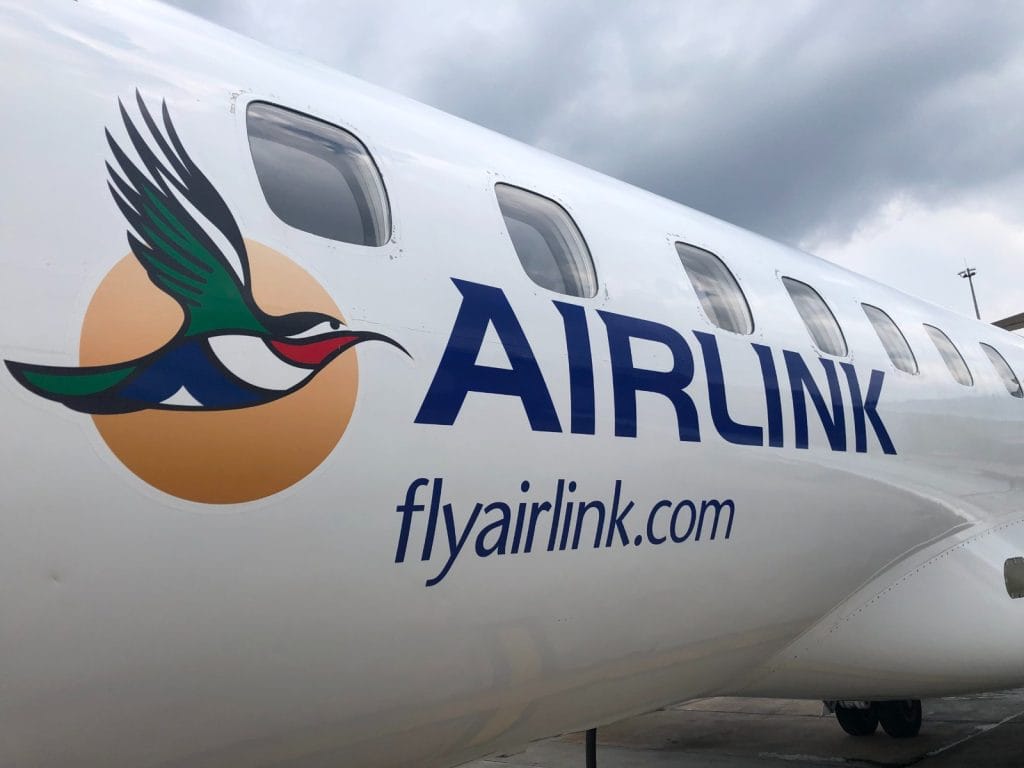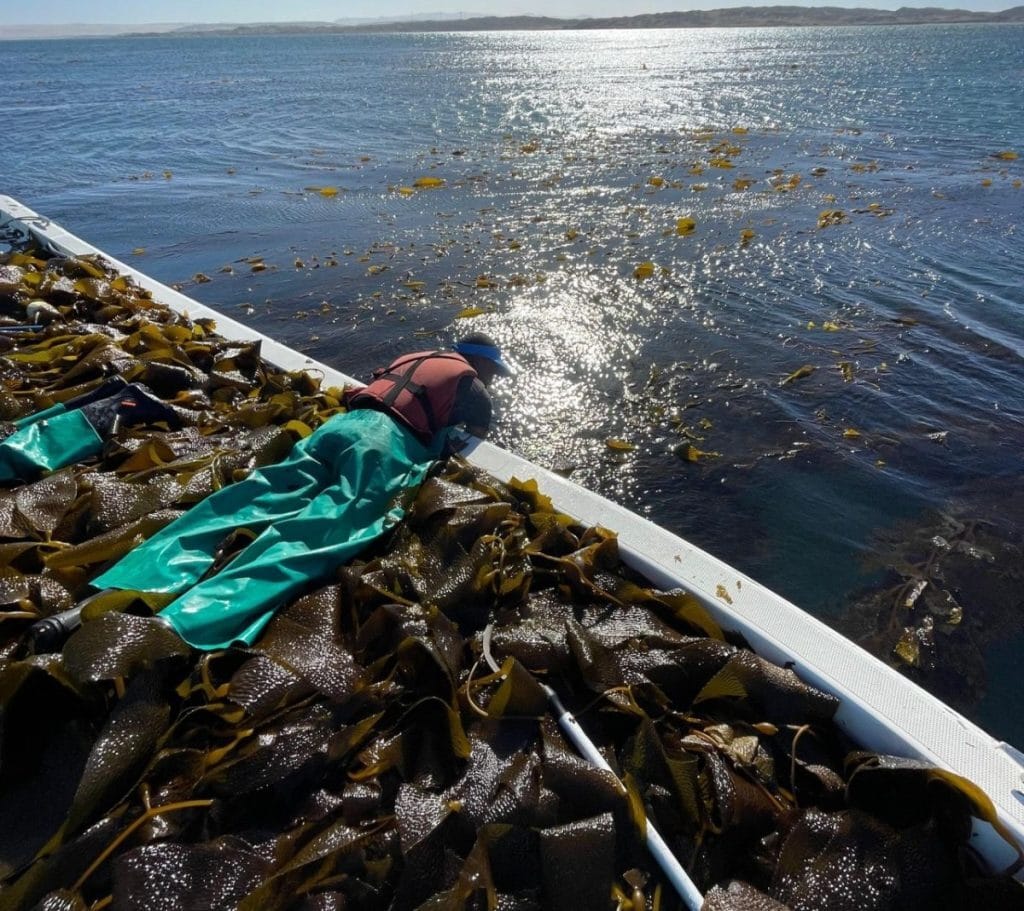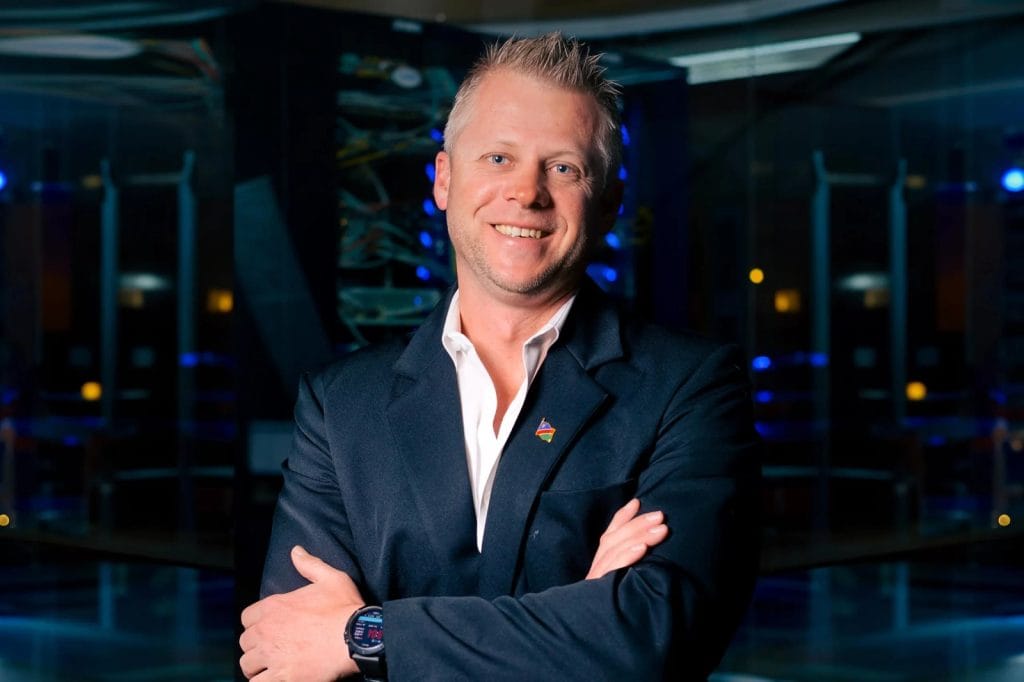- Revolox
- Posts
- Airlink Expands Connectivity with Second Daily Flight Between Walvis Bay and Johannesburg - ISSUE #59☕
Airlink Expands Connectivity with Second Daily Flight Between Walvis Bay and Johannesburg - ISSUE #59☕
Airlink has launched a second daily flight between Walvis Bay and Johannesburg, effective 4 July 2025, enhancing travel options between Namibia’s coast and South Africa’s economic hub.

Revolox banner
Good morning, readers!
Welcome to today’s edition of Revolox Media — your trusted source for fresh, youth-focused reporting on Namibia’s biggest business, tech, and economic stories.
In this issue, we dive into the resilience of Namibia’s mining industry, which continues to post strong local procurement numbers despite ongoing turbulence in the diamond sector. We also track the skies with Airlink’s expanded service, now offering a second daily flight between Walvis Bay and Johannesburg, boosting regional connectivity.
In the environmental innovation space, Kelp Blue has reached a major milestone, harvesting over 200 tonnes of sustainable kelp off the Lüderitz coast — a win for ocean-based climate solutions. Meanwhile, Paratus Namibia is revving up its 5G rollout, ushering in a new chapter of digital transformation across the country.
And for those lacing up their running shoes, Bank Windhoek’s Red Run returns on 9 August, with an impressive N$60,000 in prize money up for grabs!
Let’s get into it.
BUSINESS & ECONOMY

Image credit: The Namibian
Mining Industry Posts Strong Local Procurement Despite Diamond Sector Challenges
The Namibian mining sector spent N$23.94 billion on local procurement in 2024, contributing significantly to the country’s economy despite a slight dip in overall revenue. The industry generated N$51.3 billion in revenue, a marginal decrease of 0.4%, mainly attributed to lower diamond sales, according to Chamber of Mines of Namibia CEO Veston Malango.
Sector Performance and Economic Impact
Malango noted that the mining sector contracted by 1.2% in 2024, driven primarily by reduced output from diamond mining. Nonetheless, mining remains a critical economic pillar, accounting for 13.3% of Namibia’s GDP.
The sector contributed N$3 billion in corporate taxes, N$2.2 billion in royalties, and N$360 million in export levies, reinforcing its fiscal importance to the nation.
Employment Growth and Investment Dynamics
Employment within the mining industry rose to 20,843 direct jobs—a 14.6% increase—of which 97% are Namibian citizens, underscoring the sector’s role in national job creation.
Investment trends showed a decrease in fixed capital investments to N$5.2 billion, while exploration activities increased significantly, hitting N$1.5 billion for the first time. Malango described this rise as a clear sign of renewed confidence in the sector’s long-term outlook.
Additionally, the industry invested N$245 million in training and skills development, with N$260 million allocated toward corporate social responsibility initiatives.
Outlook and Industry Engagement
Despite global challenges, particularly weakened diamond demand, the mining sector remains one of Namibia’s largest economic contributors. The Chamber of Mines pledges ongoing dialogue on critical policy matters, including the draft minerals bill, government free-carry shareholding proposals, and infrastructure development.
Malango also highlighted strong enthusiasm for the upcoming 2025 Mining Expo and Conference, scheduled for 5 to 7 August at the Windhoek Showgrounds. With 320 stands fully booked by 180 exhibitors, the event promises to be a key platform for industry stakeholders.
The mining sector’s sustained local procurement and investment activity reflect resilience amid global headwinds, supporting Namibia’s broader economic growth and employment objectives.
Source: The Namibian

Image credit: The Breif
Airlink Expands Connectivity with Second Daily Flight Between Walvis Bay and Johannesburg
Airlink has launched a second daily flight between Walvis Bay and Johannesburg, effective 4 July 2025, enhancing travel options between Namibia’s coast and South Africa’s economic hub.
Enhanced Travel Flexibility and Economic Benefits
The additional service offers greater flexibility for travellers, supporting both tourism and business sectors. Key industries such as logistics, port operations, and energy are expected to benefit from improved air connectivity. The updated schedule includes two daily flights in each direction: from Johannesburg, Flight 4Z141 departs at 10:20 and 4Z143 at 14:05; from Walvis Bay, Flight 4Z142 departs at 13:40 and 4Z144 at 17:25.
Strategic Importance for Namibia’s Air Network
Bisey /Uirab, CEO of Namibia Airports Company and spokesperson for Air Connect Namibia, highlighted the expansion’s significance, stating, “This new Airlink expansion offers travellers improved air access to Walvis Bay and Swakopmund. It is a strategic link that reinforces Walvis Bay’s role as a Southern African trade, investment and tourism hub.” He further emphasized that the growth reflects strong public-private collaboration, showcasing the positive impact of joint efforts to boost Namibia’s air connectivity.
Gateway to Namibia’s Prime Tourist Destinations
Walvis Bay continues to serve as a vital entry point to Namibia’s premier tourist attractions, including Swakopmund, the Namib Desert, and Namib-Naukluft National Park, further supporting the country’s tourism sector.
Air Connect Namibia Initiative
Launched in 2024 by the Namibia Airports Company, Air Connect Namibia is a national programme dedicated to developing air services. The initiative partners with key stakeholders such as the Gondwana Collection, Namibia Chamber of Commerce and Industry, Namibia Investment Promotion and Development Board, Namibia Tourism Board, Walvis Bay Corridor Group, and the City of Windhoek. Together, they support airline operations at Namibia’s international airports to strengthen the country’s air transport infrastructure.
Source: The Brief

Image credit: The Brief
Kelp Blue Harvests Over 200 Tonnes of Sustainable Kelp Near Lüderitz
Kelp Blue has successfully harvested more than 200 tonnes of giant kelp (Macrocystis pyrifera) from its offshore cultivation site near Lüderitz in 2025. Operating under a 15-year commercial license covering 6,400 hectares, the company is advancing sustainable ocean farming off Namibia’s coast.
Founder and CEO Daniel Hooft explained that their innovative harvesting technique focuses on long-term ecological health by trimming only the kelp canopy. “We trim only the canopy of our underwater forests to ensure healthy regrowth, capture carbon, and boost marine biodiversity,” Hooft said.
The planted kelp forests have already demonstrated rapid ecological benefits. “We have seen three- to fourfold biodiversity increases in our farms within five months of planting,” Hooft noted, highlighting the area’s burgeoning marine life.
Research indicates the kelp zones serve as vital nurseries for fish species like hake and sardines, with seasonal spikes in eDNA levels confirming these forests’ role as hatcheries. “This increases an individual fish egg’s chance of survival by one hundred times,” he added.
The ecosystem is attracting diverse marine fauna. “Mola mola are cruising our forests feeding on jellyfish, dolphins are thriving in this new hunting ground, and the kelp provides shelter from orcas,” said Hooft. Shark populations are also benefiting, with increased “mermaids’ purse” counts indicating higher egg sac attachment, supporting population growth.
Kelp Blue processes the harvest into Stimblue+, a biostimulant that boosts agricultural productivity. “Stimblue+ enhances crop yields and soil health, supporting regenerative farming,” Hooft explained.
Through the Kelp Forest Foundation, the company measures ecosystem services such as carbon sequestration, biodiversity improvement, and job creation, contributing to global kelp conservation and restoration efforts.
In addition, Kelp Blue runs the Lüderitz Blue School marine education initiative, dedicated to cultivating a new generation of ocean custodians. “We are raising future leaders who will champion the ocean’s health,” concluded Hooft.
Source: The Brief
TECH

Image credit: The Brief
Paratus Namibia Accelerates 5G Rollout, Driving Next Phase of Digital Transformation
Paratus Namibia is gearing up to expand its mobile technology footprint in the country with the imminent rollout of 5G, positioning itself at the forefront of Namibia’s evolving digital landscape.
Expanding Infrastructure and Investment
In a recent interview on The African Tech Roundup, Managing Director Andrew Hall highlighted 5G as a critical growth opportunity for Paratus. “Looking ahead, our next big move is expanding our mobile technology footprint—specifically 5G. That’s where we see the next wave of opportunity,” Hall said, detailing the company’s commitment to investing heavily in fibre infrastructure alongside the 5G launch to meet increasing demand for faster, more reliable connectivity.
Championing Collaboration Over Duplication
Hall called for enhanced cooperation among Namibia’s telecom operators, noting that infrastructure duplication is impeding efficiency and sector growth. He cited the prevalent issue of multiple operators laying parallel fibre cables and erecting redundant mobile towers on the same routes, which drives up costs unnecessarily. “Open access models, like the one we introduced, are key to improving competition and service delivery,” Hall explained, advocating for shared infrastructure to boost affordability and sustainability.
Open Access Network and Market Impact
Paratus is among the first Namibian operators to adopt an open access network, enabling smaller internet service providers (ISPs) to leverage its fibre infrastructure. This approach lowers the barrier for market entry, reduces redundant investments, and fosters a more competitive telecom environment — ultimately benefiting consumers through increased options and improved service quality.
Enterprise Focus with Growing Consumer Base
While Paratus primarily serves corporate clients—accounting for around 75% of its business—the company has experienced strong growth in the consumer market since 2016. Hall attributes this success to consistently delivering high-quality internet service and remaining agile in meeting customer needs.
Historical Growth and Future Outlook
Since its inception, Paratus has consistently reinvested in Namibia’s telecom sector. The company initially established a wireless network before constructing its first major fibre backhaul from the Swakopmund cable landing station to the Botswana border. Beginning in 2018, Paratus rolled out fibre-to-the-home (FTTX) infrastructure in Windhoek before expanding nationwide, laying the groundwork for future 5G deployment.
The Bottom Line
Paratus Namibia’s aggressive push into 5G and fibre infrastructure strengthens its role in the country’s digital transformation, emphasizing collaboration and open access to accelerate affordable, high-quality connectivity across Namibia. As the telecom landscape evolves, Paratus aims to remain a key player driving growth and innovation in the sector.
Source: The Brief
EVENTS

Image credit: Namibia Economist
Reply